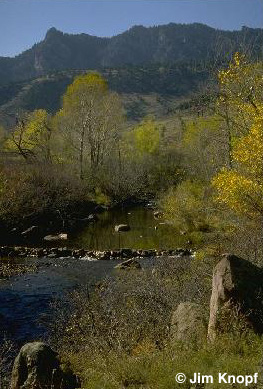|
|
|
||||
|
The Earth Sciences, broadly defined, will provide important understandings for society in the 21st Century. As the global human population approaches and perhaps exceeds 9 billion people, interactions among the atmosphere, biosphere, hydrosphere and lithosphere will define significant boundary conditions for the future sustainability of the human enterprise and the survival of these Global Commons.
This series of essays will provide pathways to bring the issue of sustainability into the public domain. Engage your students or neighbors in dialogs about the ideas that will influence the quality of their lives and those of their children or grandchildren in the coming decades.
INTRODUCTION TO THE SERIES
Sustainability, in the context of these discussions,
refers to the extent to which human populations can persist indefinitely
at an acceptable range of living standards.
Hence, whatever else sustainability might imply, it requires
that vital naturally renewable resources – the air we breathe, the water
we drink, and the diverse population of plants and animals upon which
human civilization depends – be sustained at some minimum level.
The permissible levels of consumption of these “renewable” resources
is at the heart of the sustainability debate.
Although consumption of “nonrenewable” resources such as minerals
is by definition not sustainable, developing interim nonrenewable substitutes
as others are depleted may be essential for a successful transition
to a sustainable (renewable) society.
The first half of this new century will be a critical time for humanity. Global population is projected to reach 9 billion by mid-century. Consumption of natural resources rises with population, as does the generation of wastes. Earth is a finite place. Sooner or later, and many thoughtful people think sooner, the consequences of these increases will create serious human problems. All people, in all countries, should be aware of the concepts that underlie these concerns about a sustainable future for the human enterprise as we know it. As you read the series of essays developed on these pages, think 2050, a date within the lifetimes of many of us or of our children and grandchildren.
Each essay in this series focuses on a particular concept that is essential to understand the issue of sustainability. The goal is to help bring these concepts clearly into the public domain so that they become integral parts of the education of every citizen in North America, and we hope eventually elsewhere.
A major target audience is teachers and teachers of teachers, because this group provides the greatest probability for a multiplier effect. Although the principal stakeholders in the world of 2050 are college-age or younger today, don’t neglect your “neighbor”. The concepts in this series of essays were presented with considerable effect in a an Elderhostel course. The essays touch only on some key points. The complexity of Sustainability is evident in the GUIDELINES that accompany these essays.
In the texts that follow,
“students” will refer to people of all ages.
Teaching need not be confined to classrooms. | |||||
|
About BASIN | Attribution | Feedback | Search | |||||

